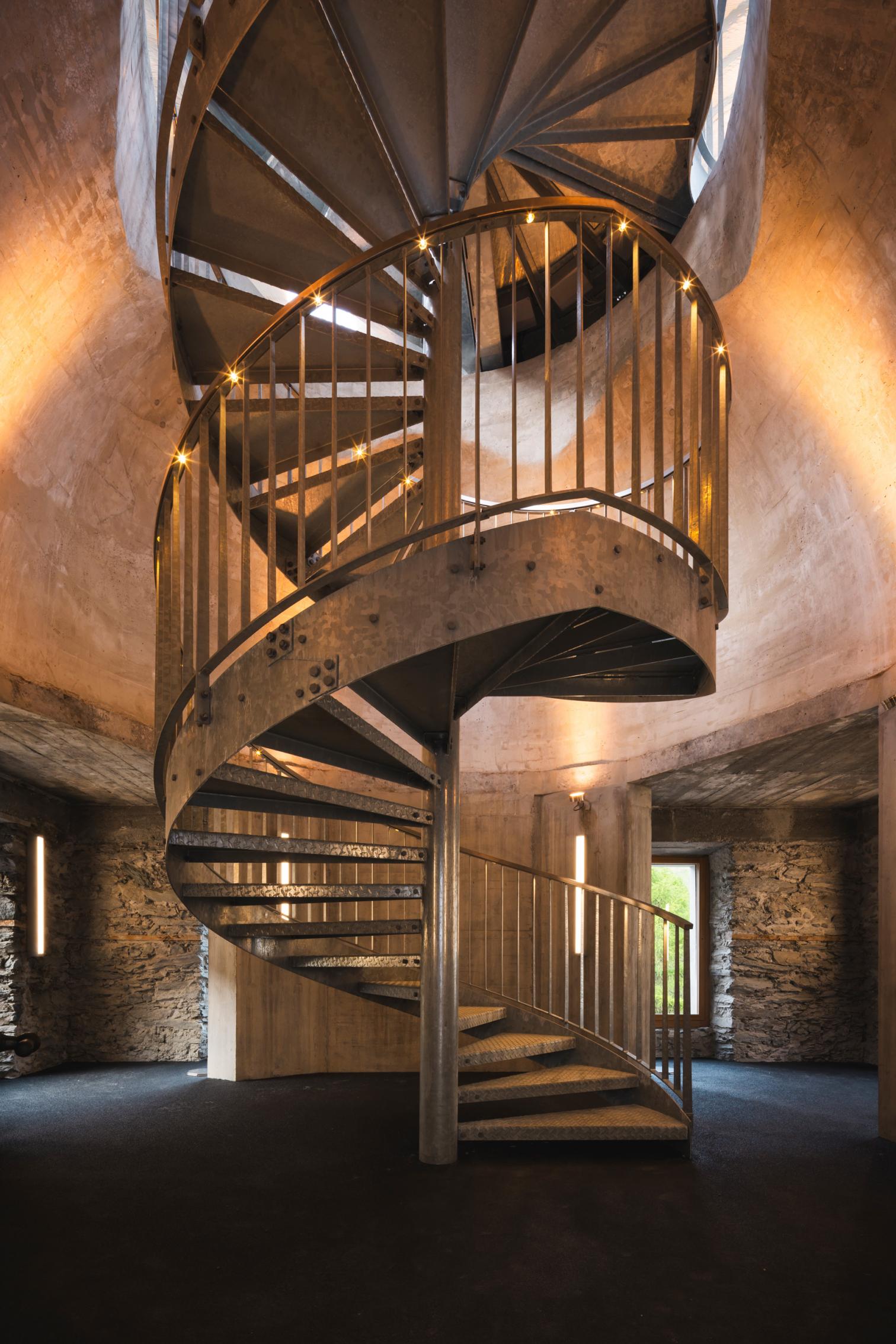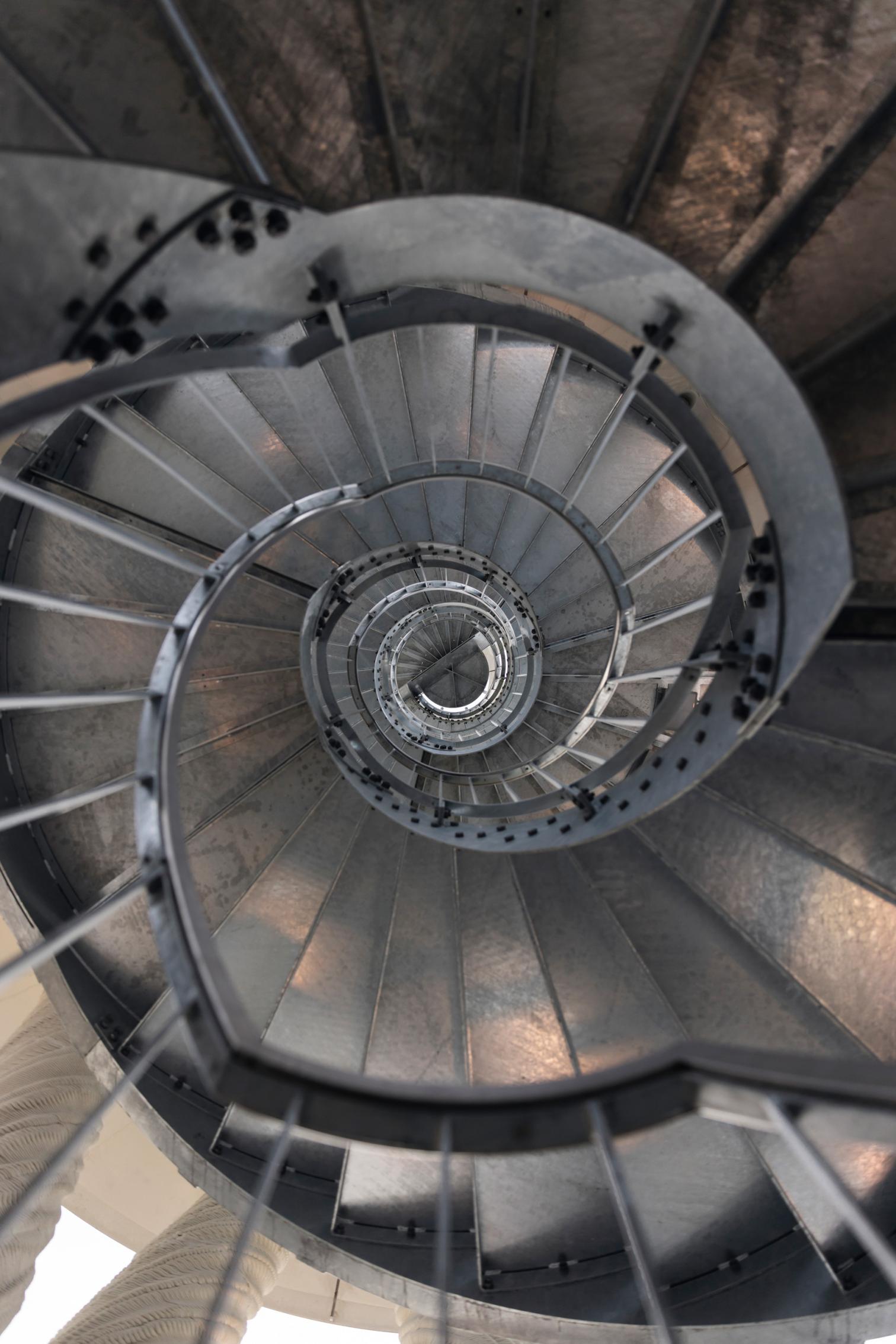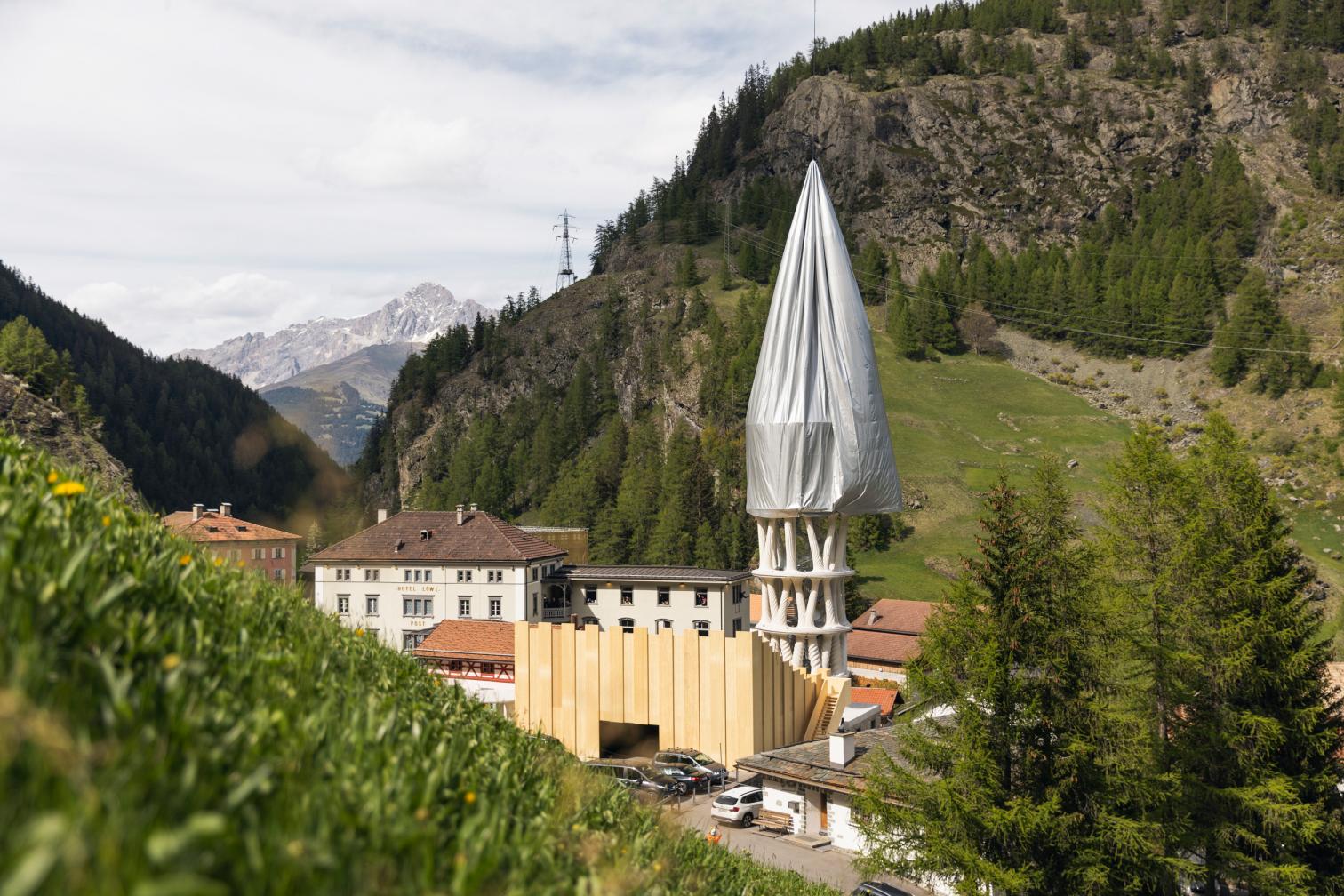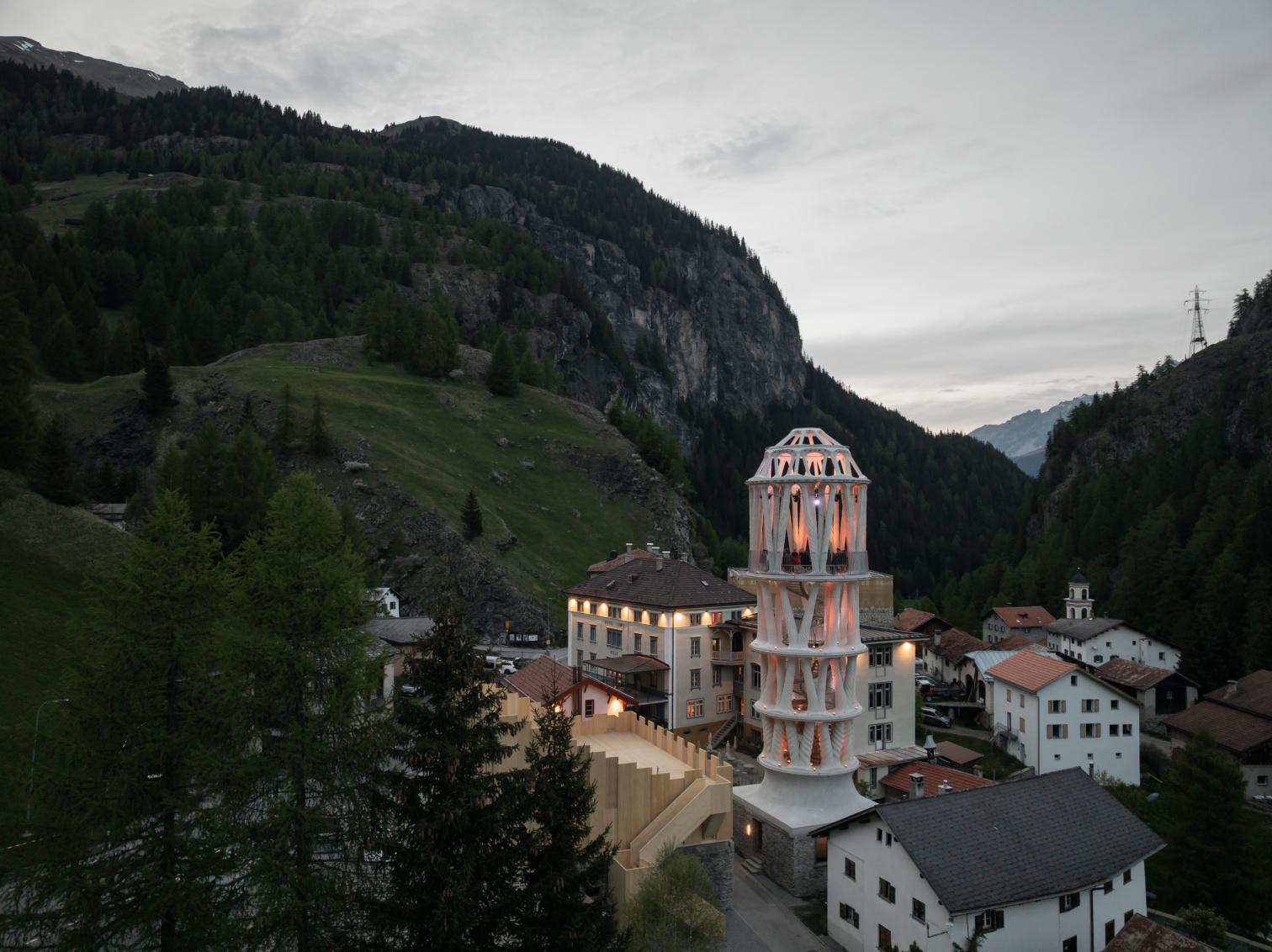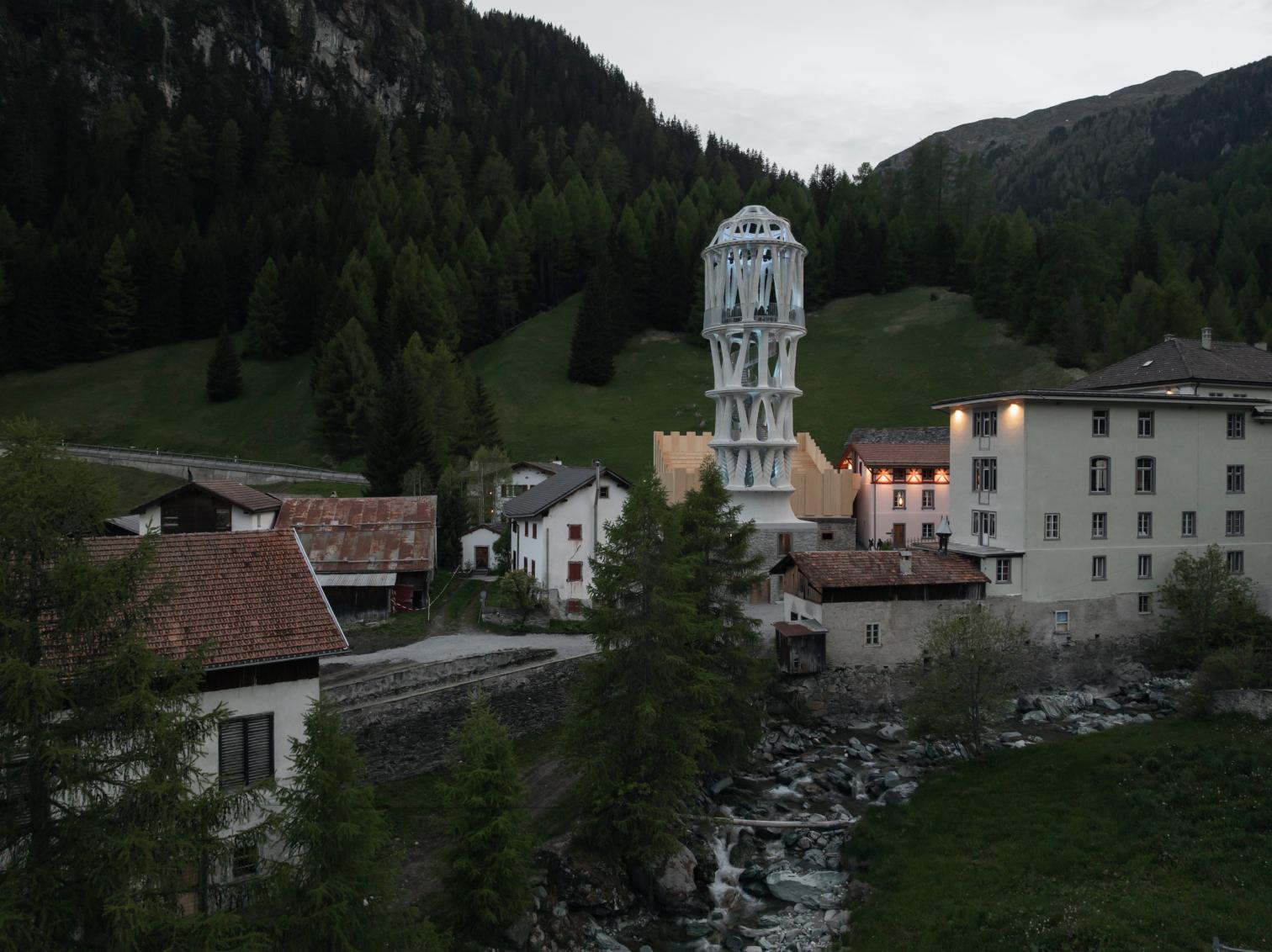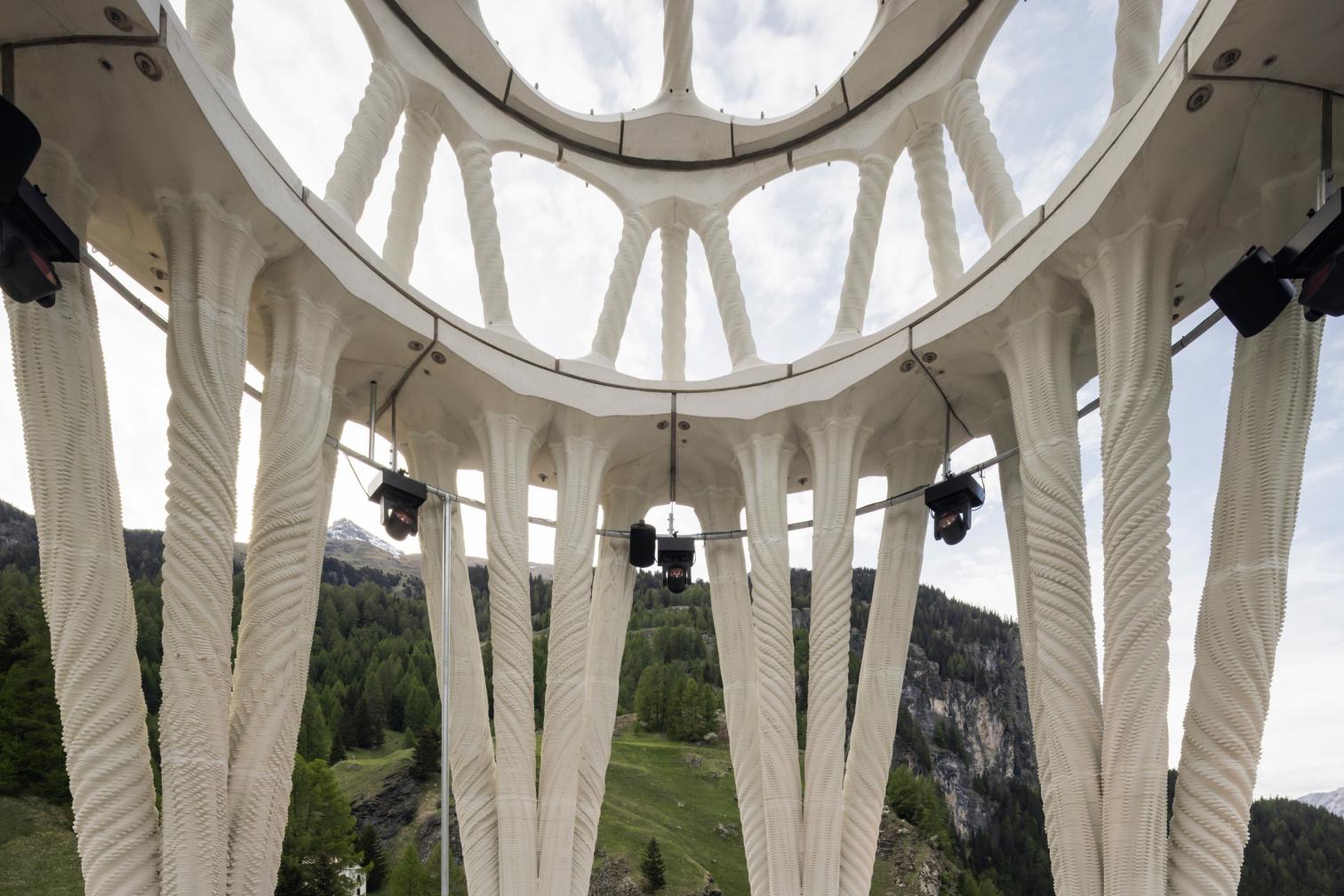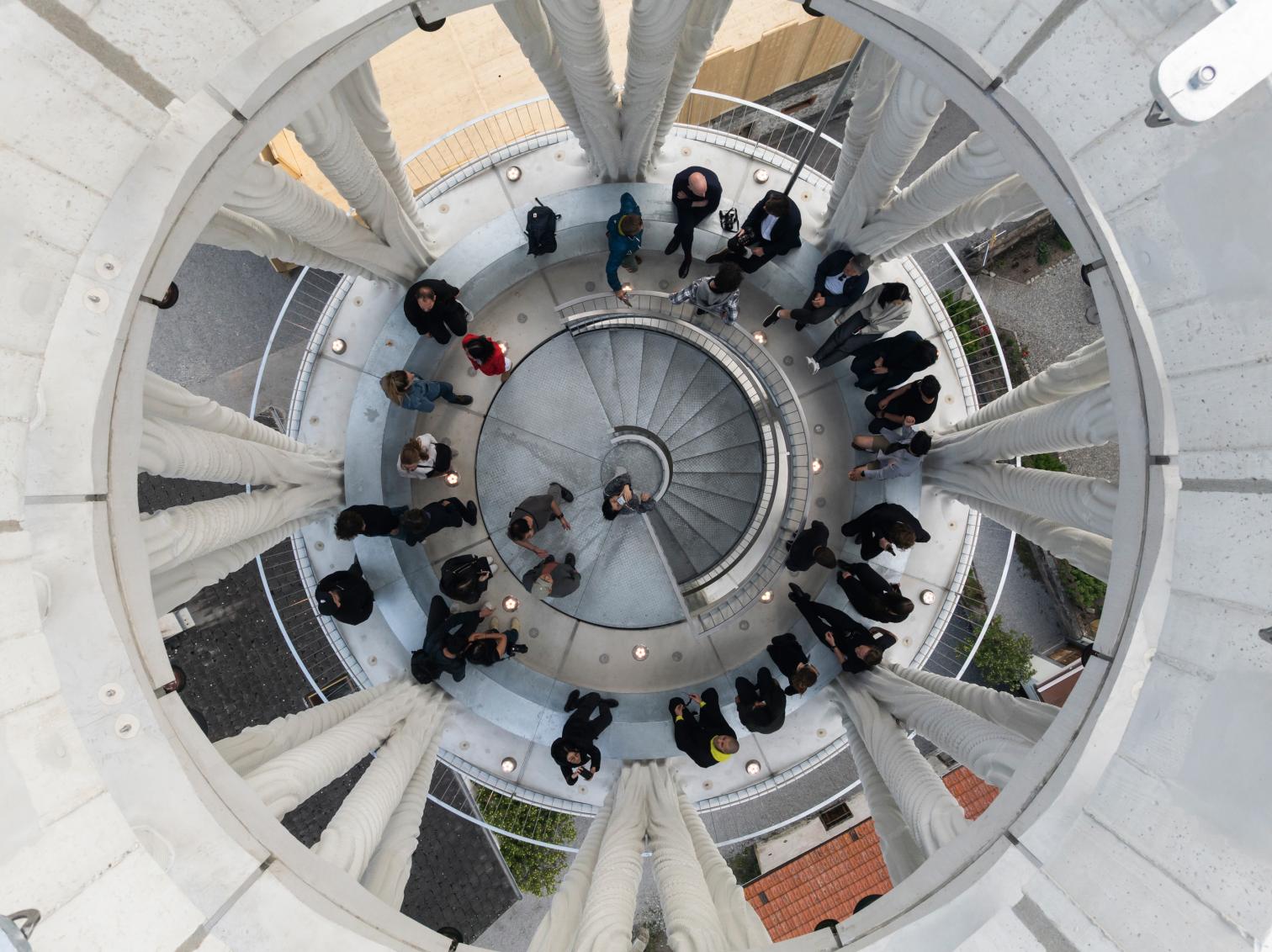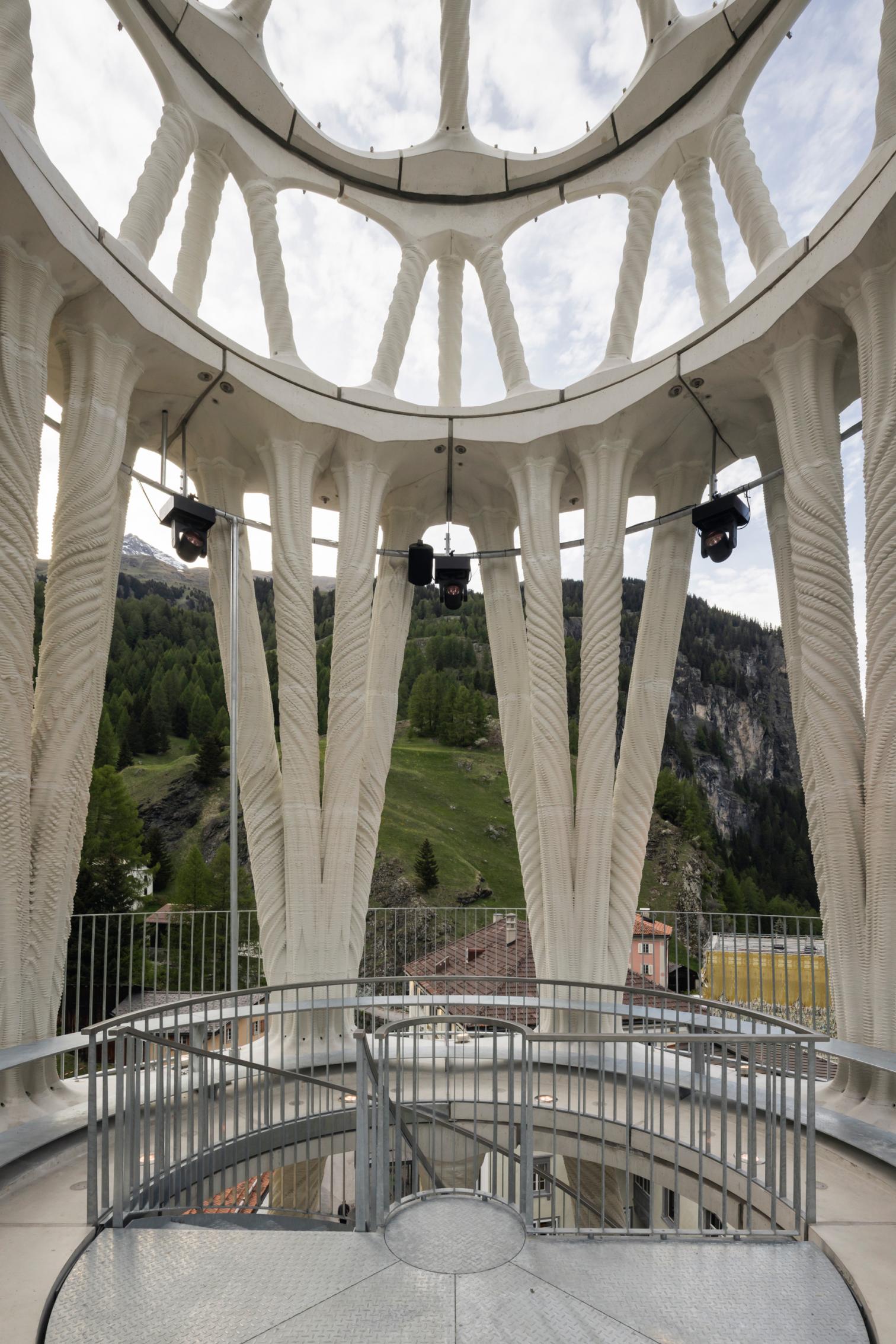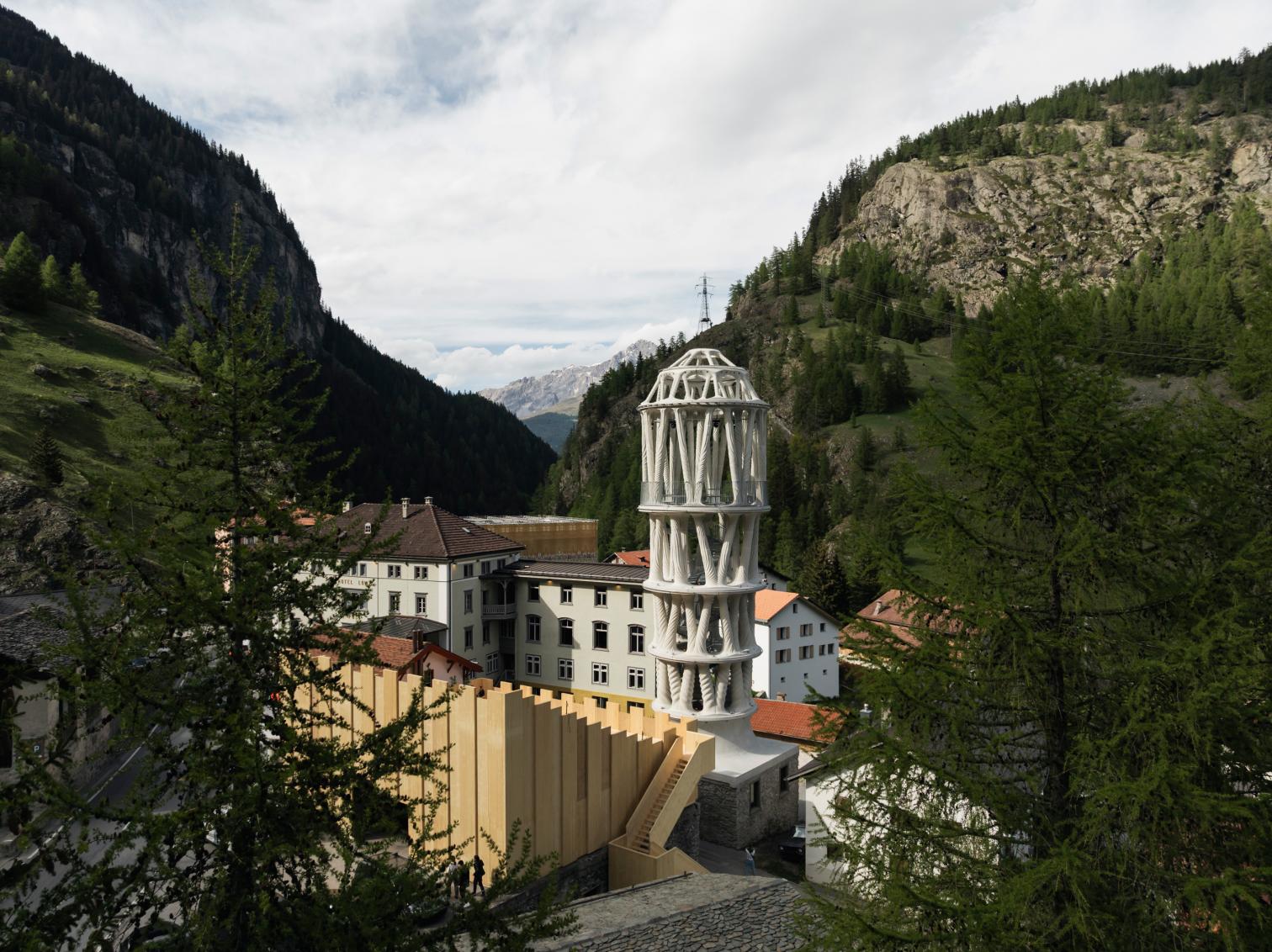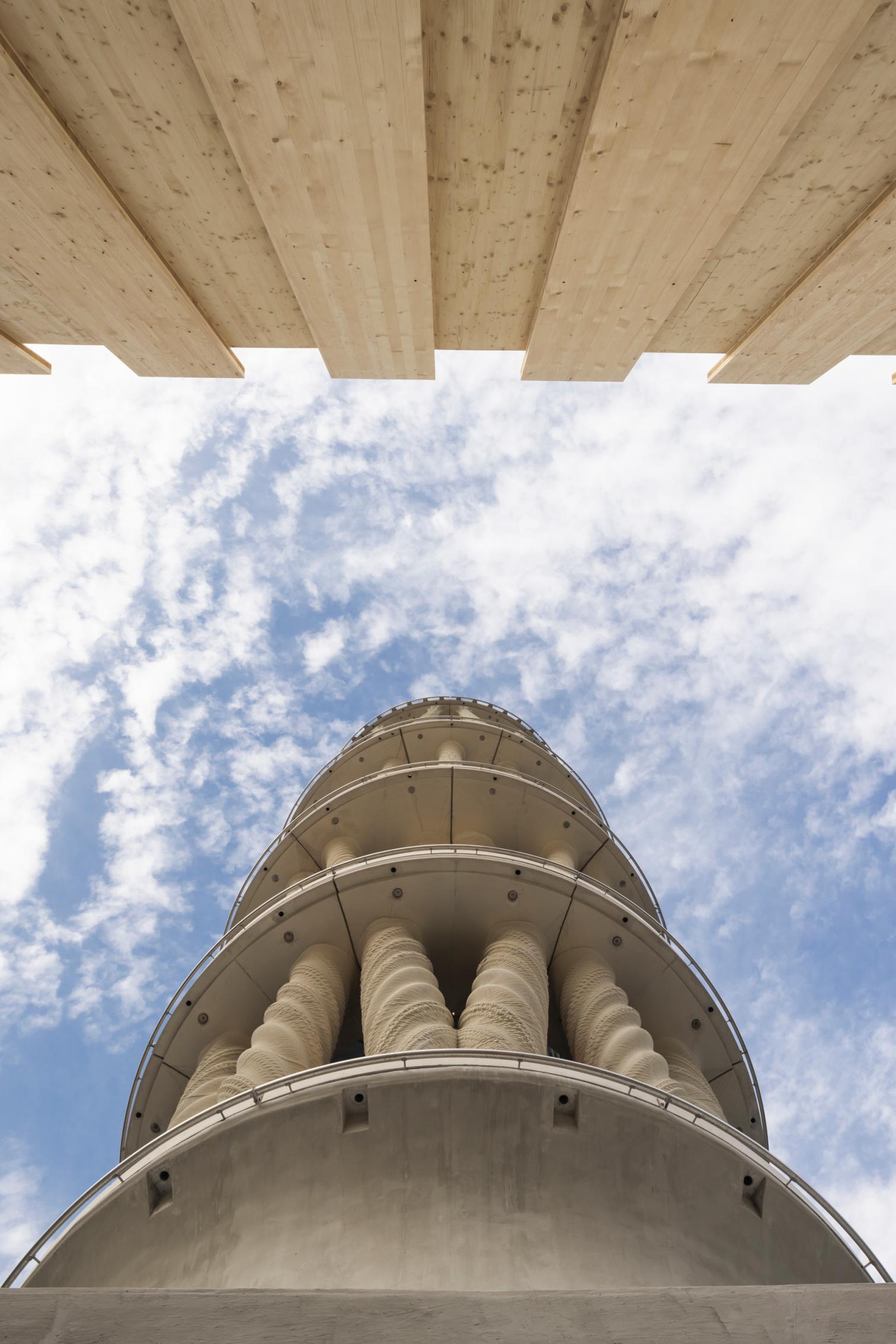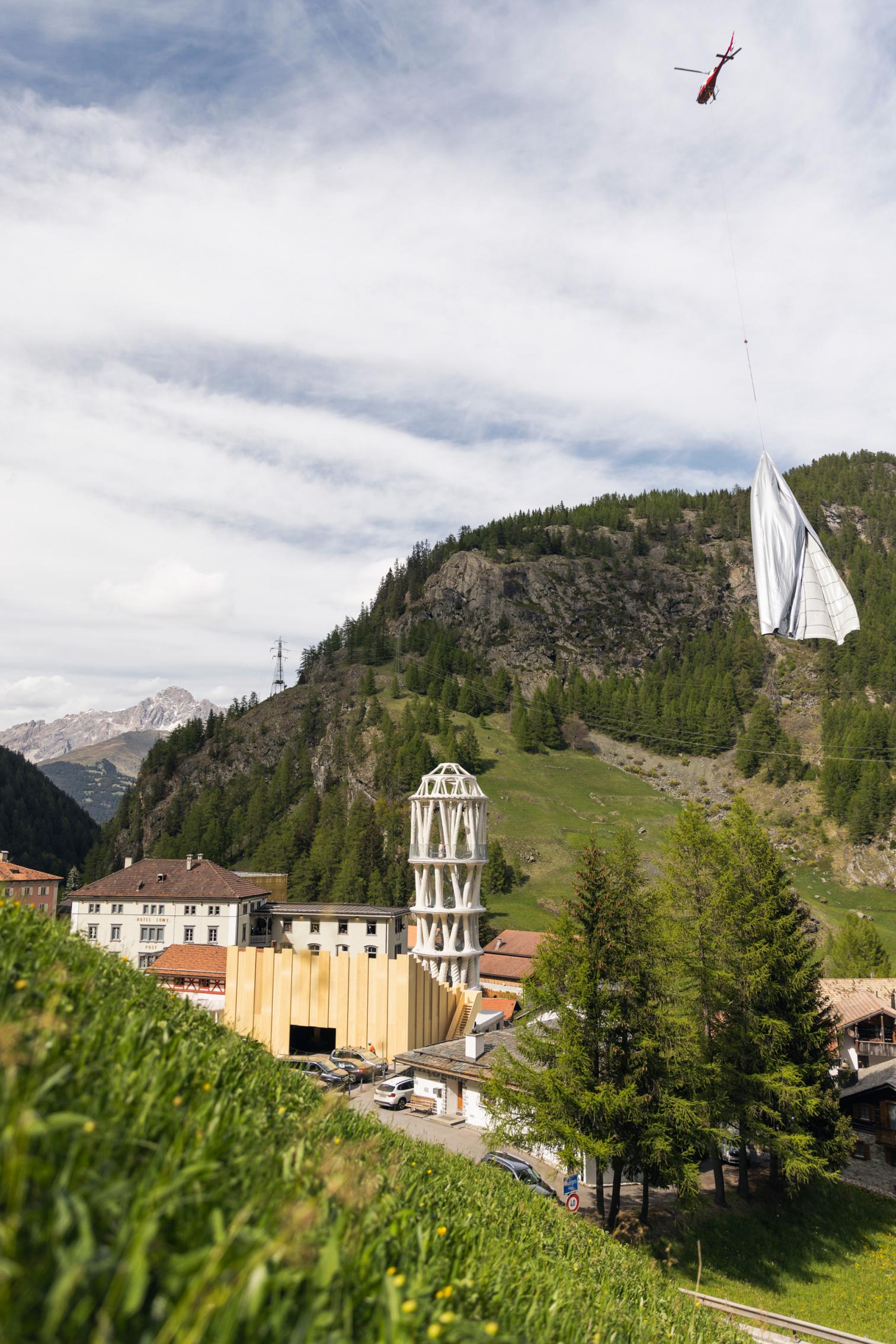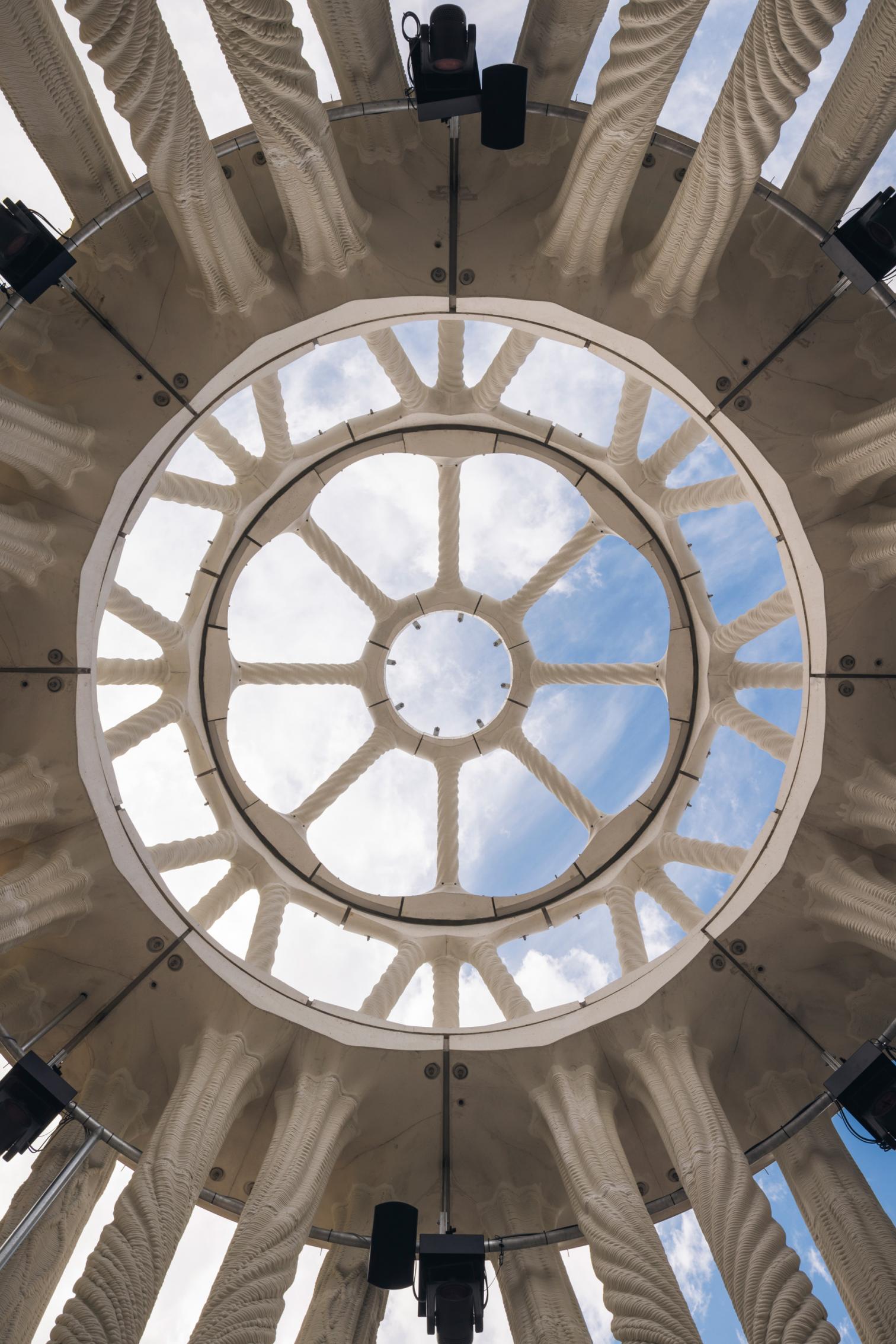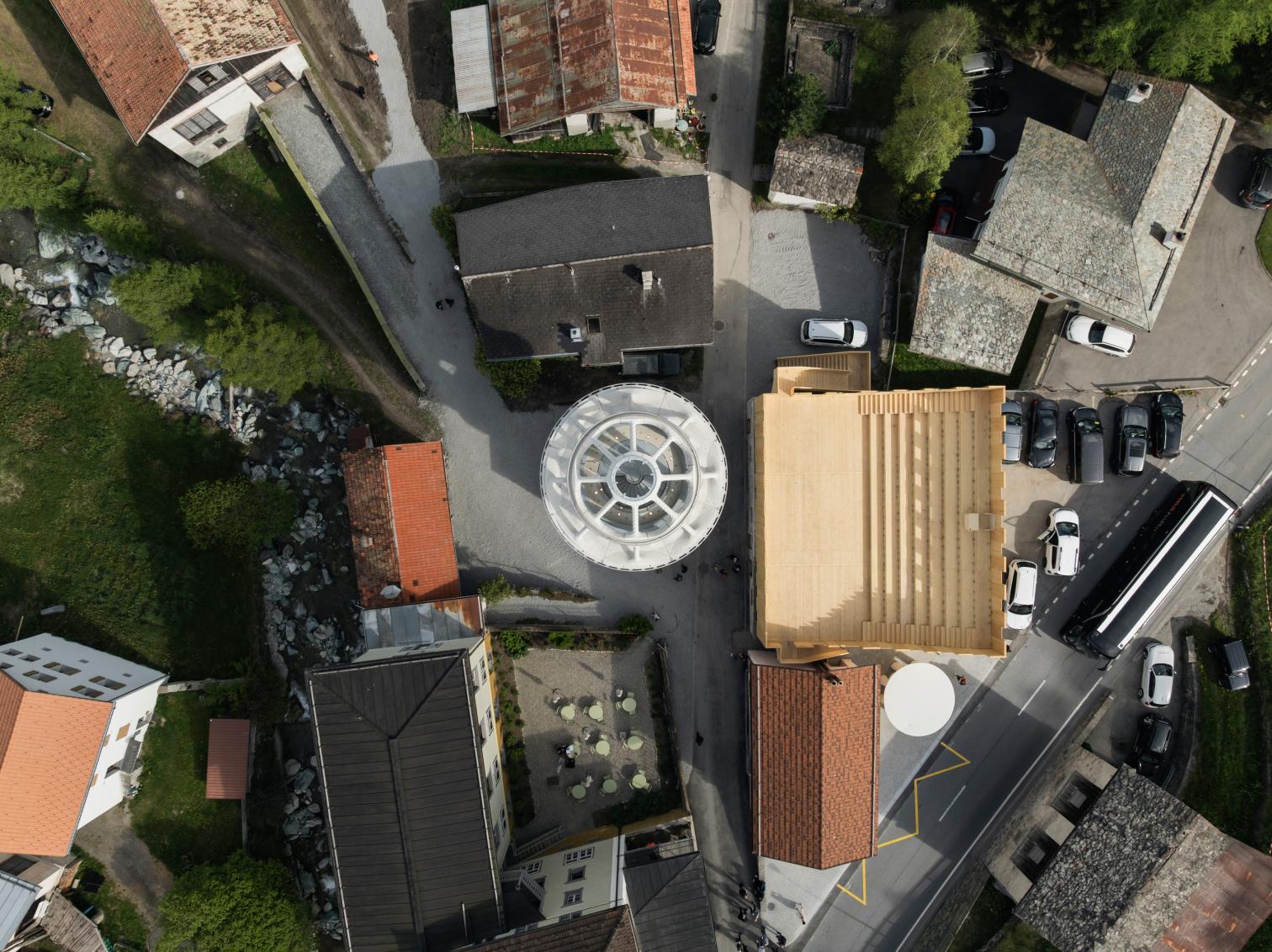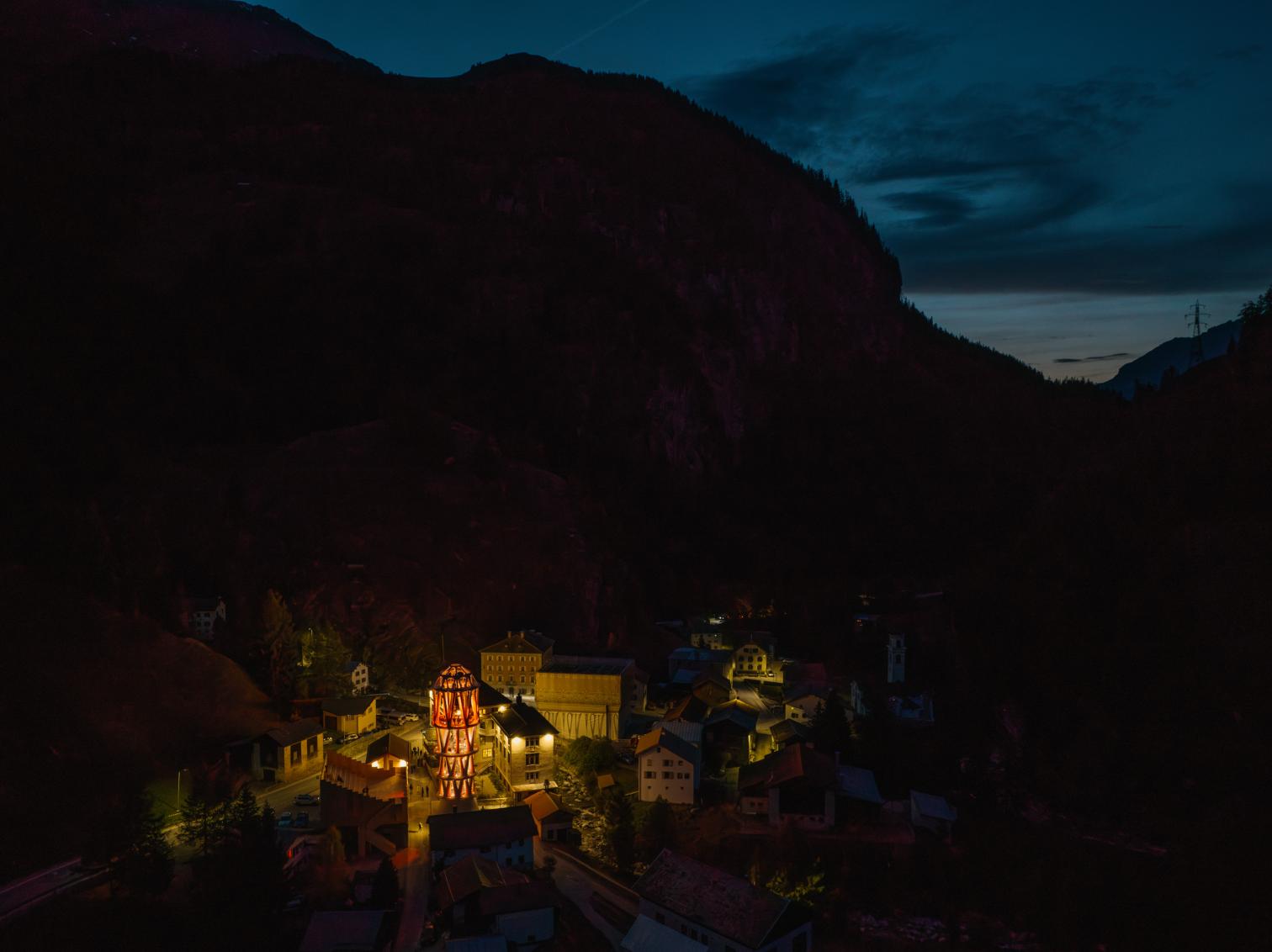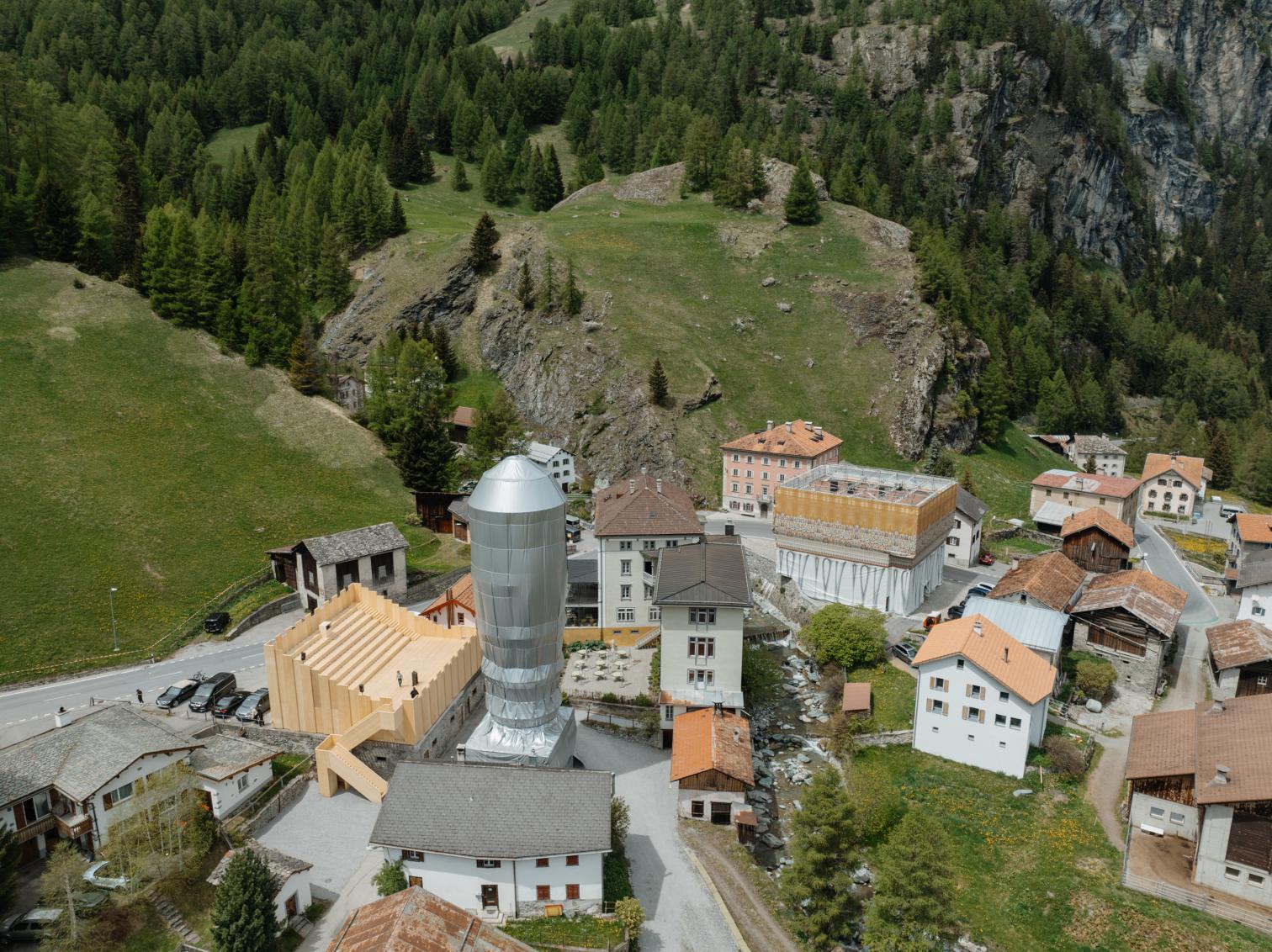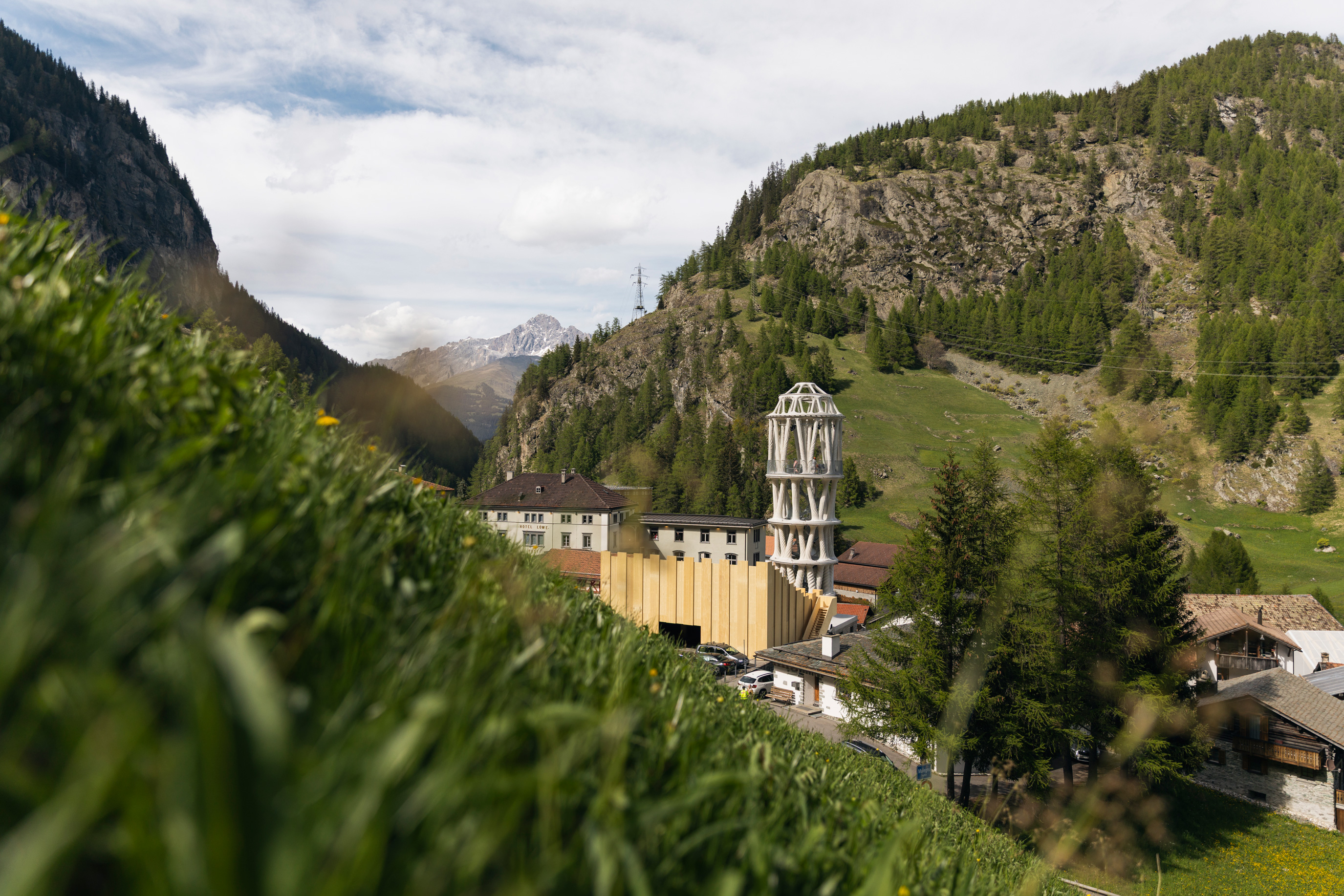Tor Alva, the world’s tallest 35-printed tower
ETH Zürich- Type Tower Prefabrication Ephemeral Architecture
- Material Concrete
- Date 2025
- City Mulegns
- Country Switzerland
- Photograph Benjamin Hofer Birdview

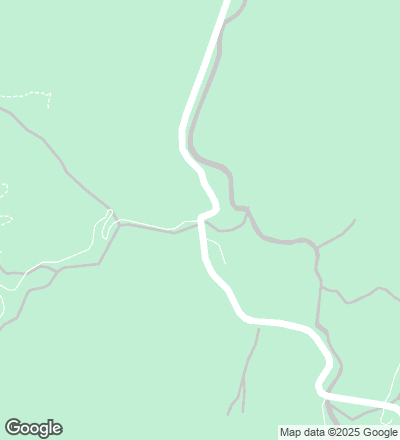
Rising almost 30 meters, Tor Alva is the tallest 3D-printed tower in the world. Built by Nova Fundaziun Origen with ETH Zurich, it aimed to revitalize Mulegns (Switzerland), a small Alpine village with only eleven inhabitants at present. Tor Alva (White Tower) will function as a cultural center for five years, then be reassembled at another location. Crowned by a vaulted space, the composition of 32 columns distributed in four levels emulates a layered cake, paying tribute to the history of pastry chefs in the region.
A fruit of the architect Michael Hansmeyer’s close collaboration with the ETH Zurich professors Walter Kaufmann, Robert Flatt, and Benjamin Dillenburger, Tor Alva is, the team says, a pioneering work of digital manufacturing, and the world’s tallest 3D-printed multistory building. The printing of the columns on ETH’s Hönggeberg campus took five months. The components were assembled later, transported to Mulegns, and placed over a building that had been an ironworks.
Tor Alva shows how digital construction techniques can be used to make loadbearing structures without formworks. The method chosen was a process of additive fabrication, by means of which an industrial robot applies the concrete layer by layer, with no need for molds. The design is based on complex algorithms that generate ornamental and structural aspects simultaneously.
A concrete product specially developed for the purpose is necessary for this process to be possible. It has to be soft enough for pieces to be joined, and must harden fast enough to take further layers. Right before the concrete exits the pressurized mouth of the machine, two additives are put into the mix.
What’s special about this project is that the 3D-printed elements do not only provide a frame; they are also loadbearing. To strengthen the 3D-printed concrete, a robot applies concrete by layers, and a second one places an annular reinforcement in the new structure at 20-centimeter intervals. Complementing this horizontal reinforcement in the form of rings are longitudinal bars added after the printing. Finally, the research team developed a testing method that makes it possible to reliably calculate the loadbearing capacity of the 3D-printed concrete.
